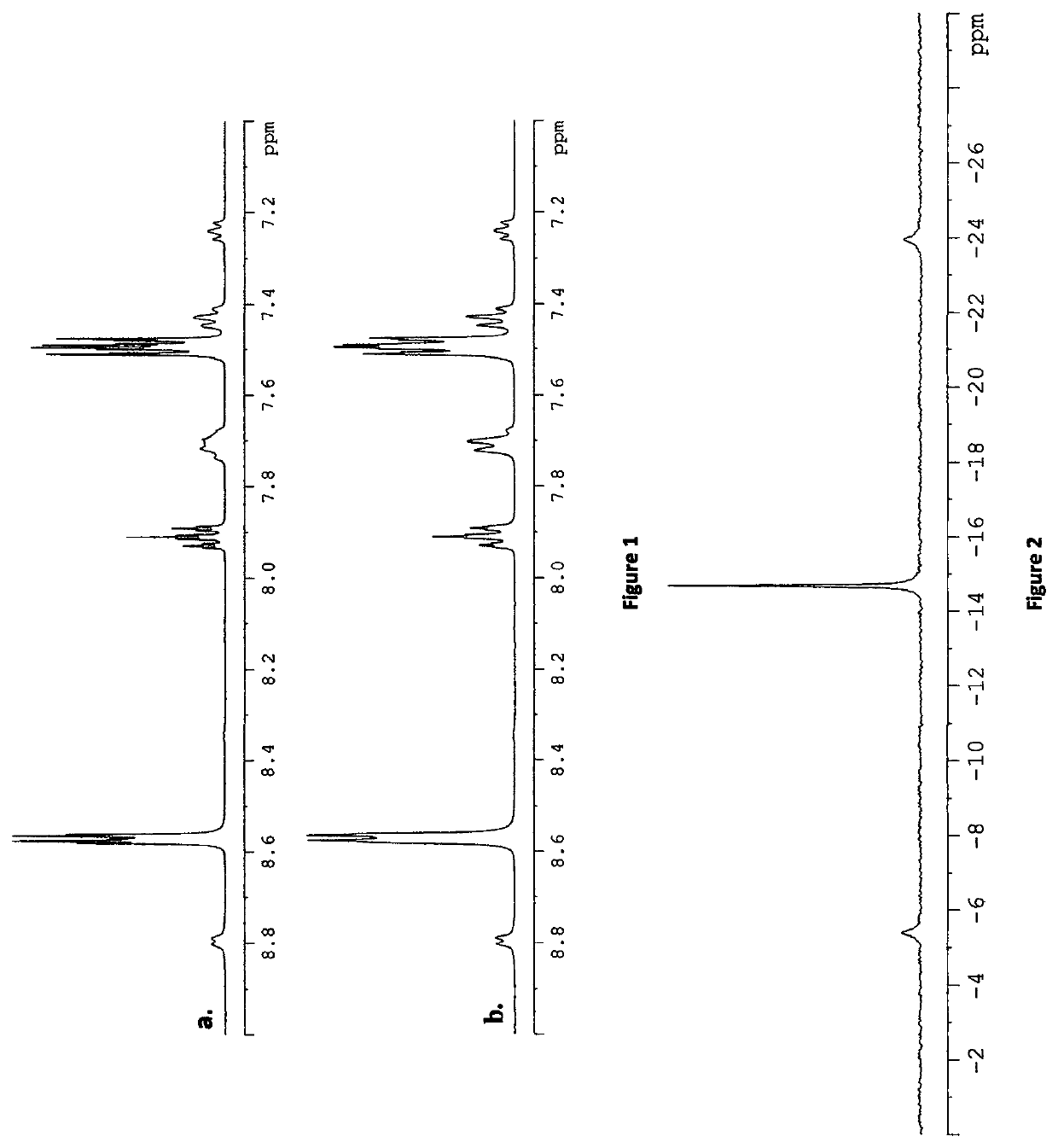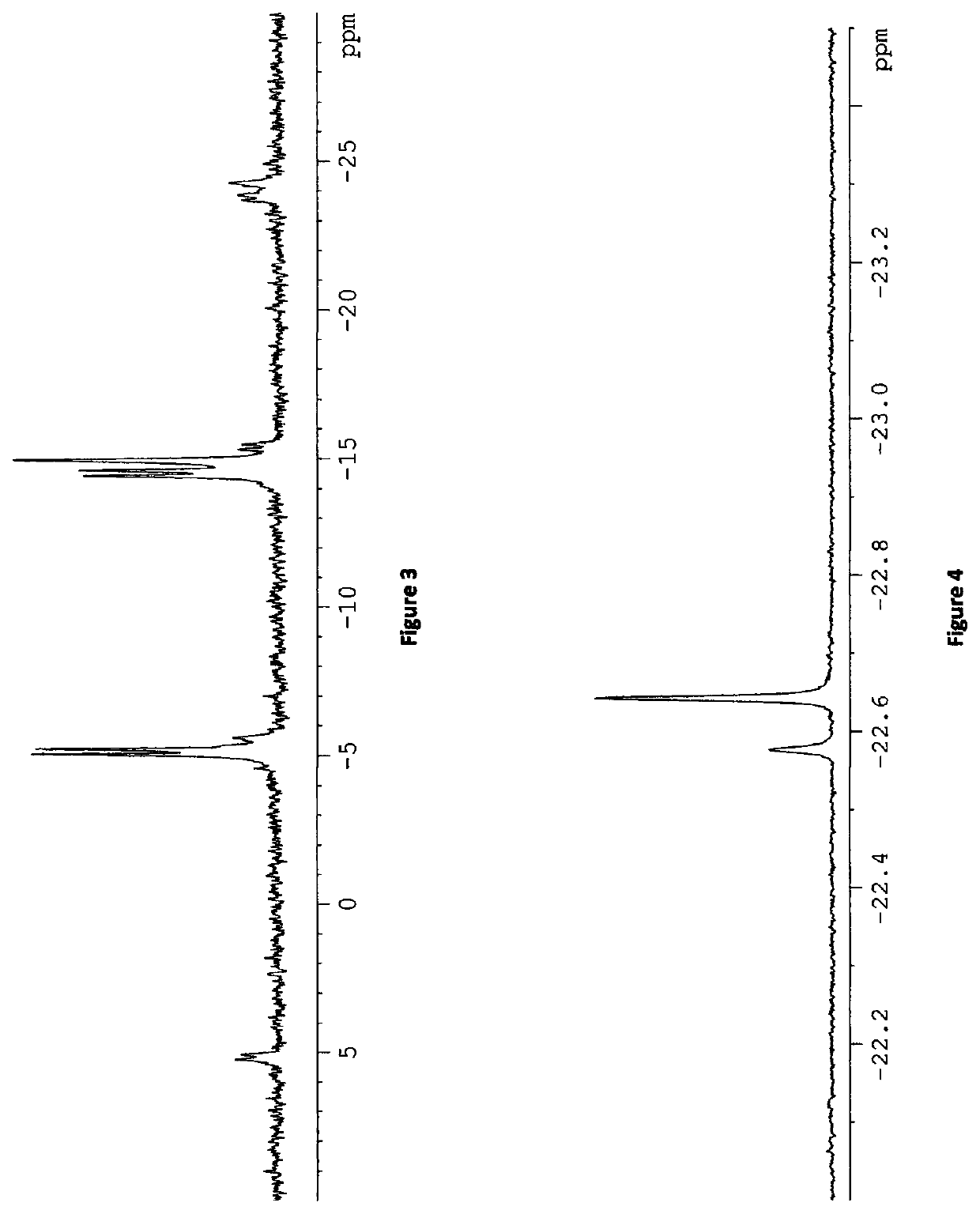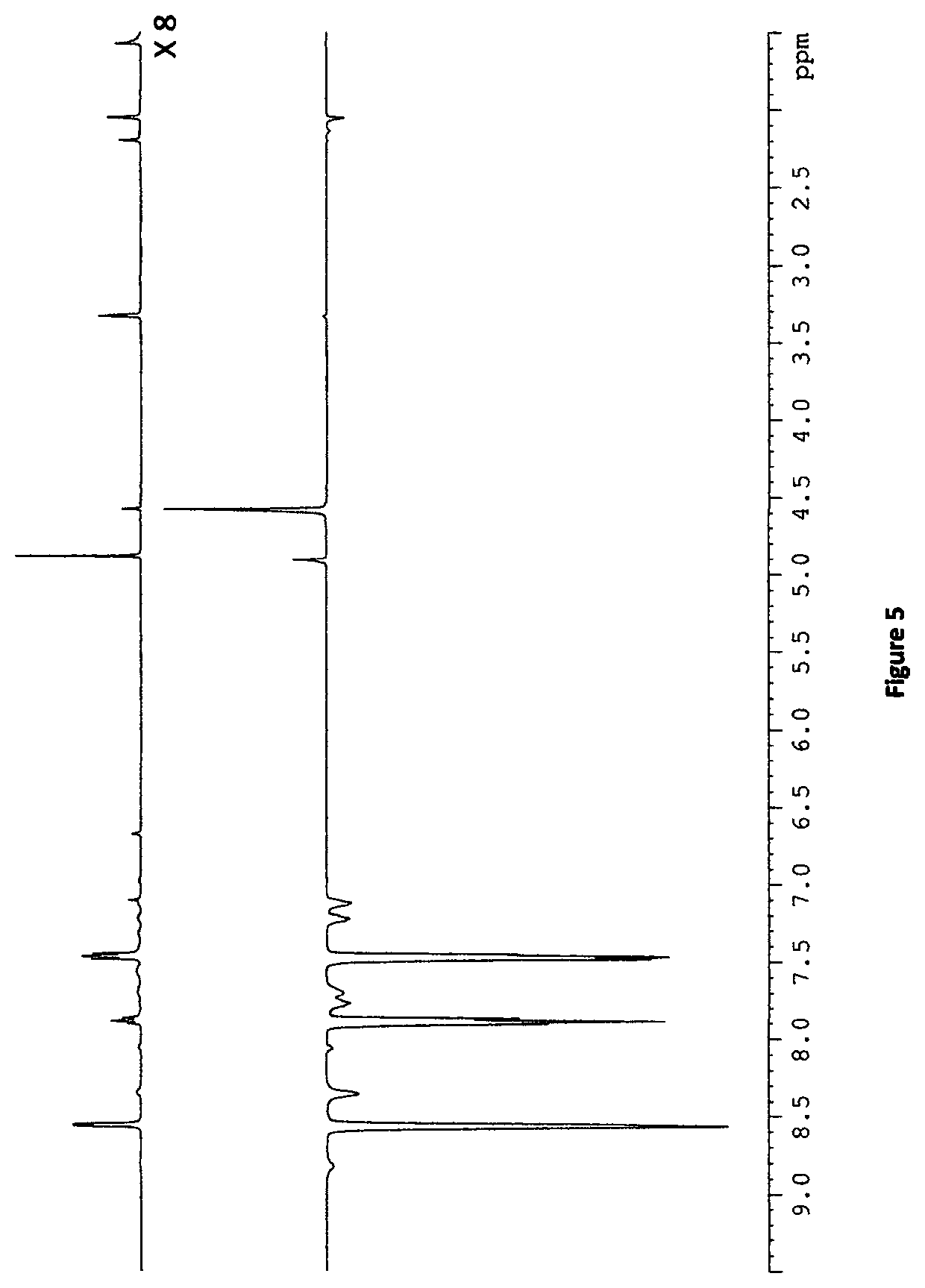Polarisation transfer via a second metal complex
a polarisation transfer and metal complex technology, applied in the direction of magnetic variable regulation, instruments, measurement using nmr, etc., can solve the problems of large increase in available signal, inherently insensitive, weak nmr and mri signals,
- Summary
- Abstract
- Description
- Claims
- Application Information
AI Technical Summary
Benefits of technology
Problems solved by technology
Method used
Image
Examples
example 2
[0121]Displacement of the triflate ligands of [Pt(OTf)2(dppp)] in d4-methanol with 10 equivalents of pyridine (py) was investigated. NMR spectra were collected to identify any signals corresponding to bound pyridine. The 1H and 1H {31P} NMR spectra are given in FIGS. 1 and 2.
[0122]In the 1H NMR spectrum the large signals at δ 8.57, 7.91 and 7.50 correspond to unbound pyridine in solution. The smaller signals at δ 8.80, 7.71, and 7.24, correspond to the ortho, para, and meta protons of pyridine bound to platinum and those at δ 7.72, 7.50 (hidden beneath unbound pyridine peak), and 7.43 correspond to the ortho, para, and meta protons of the phenyl rings in dppp.
[0123]The 31P {1H} NMR spectrum contains just one singlet at δ−14.68 with a JPPt splitting of 3000 Hz. The singlet nature of the 31P NMR signal confirms that the platinum complex has C2v symmetry, which can only be the case when both triflate ligands are replaced with pyridine, forming [Pt(py)2(dppp...
example 3
Metal Complex 1 with pyridine and [IrCl(COD)(IMes)]
[0126]
[0127]Exchange of hyperpolarised pyridine ligands of [Ir(H)2(IMes)(py)3]Cl with [Pt(py)2(dppp)] in d4-methanol with 10 equivalents of pyridine (py) was investigated. NMR spectra were first collected to identify any different platinum complexes that formed in the presence of [IrCl(COD)(IMes)] signals. There were no obvious differences in the 31P {1H} NMR spectrum collected with [IrCl(COD)(IMes)] present, therefore the same [Pt(py)2(dppp)] complex was present in solution.
[0128]On ‘activation’ of the iridium complex with para-H2, the 31P {1H} NMR spectrum changed due to the formation of a new platinum complex. In addition to the original singlet observed at δ−14.68, two doublets were also observed at δ−5.09 and −14.49, each with JPP=28.1 Hz. These likely correspond to the platinum complex given in Scheme 5, where now only one pyridine molecule is bound to platinum. The characteristic signals for the active iridium complex, shown ...
example 4
Metal Complex 1 with Pyridazine and [IrCl(COD)(IMes)]
[0132]Exchange of hyperpolarised pyridazine ligands of [Ir(H)2(IMes)(pdz)3]Cl with [Pt(py)2(dppp)] in d4-methanol with 10 equivalents of pyridazine (pdz) was also investigated due to an increasing interest in the formation of singlet states on similar pyridazine ligands. NMR spectra were first collected to identify any different platinum complexes that formed in the presence of [IrCl(COD)(IMes)] and pyridazine. Although the 1H NMR spectra are more complicated, due to breaking of the C2, symmetry of pyridazine on ligation of one nitrogen atom, the 31P {1H} NMR spectrum (FIG. 6) confirm that a single platinum complex has formed, that contains two chemically inequivalent phosphorus nuclei. This is likely to be the complex given in Scheme 6, which is the pyridazine analogue of the pyridine complex mentioned previously.
[0133]
[0134]Addition of para-H2 resulted in the formation of [Ir(H)2(IMes)(pdz)3]Cl, which was identified by its chara...
PUM
 Login to View More
Login to View More Abstract
Description
Claims
Application Information
 Login to View More
Login to View More - R&D
- Intellectual Property
- Life Sciences
- Materials
- Tech Scout
- Unparalleled Data Quality
- Higher Quality Content
- 60% Fewer Hallucinations
Browse by: Latest US Patents, China's latest patents, Technical Efficacy Thesaurus, Application Domain, Technology Topic, Popular Technical Reports.
© 2025 PatSnap. All rights reserved.Legal|Privacy policy|Modern Slavery Act Transparency Statement|Sitemap|About US| Contact US: help@patsnap.com



